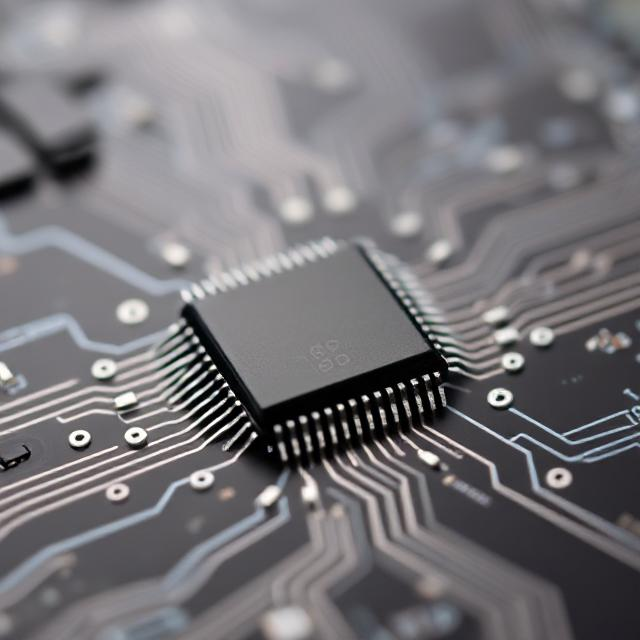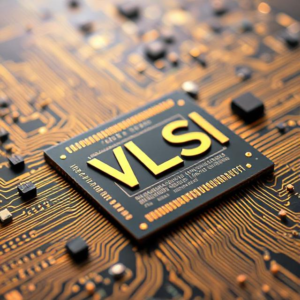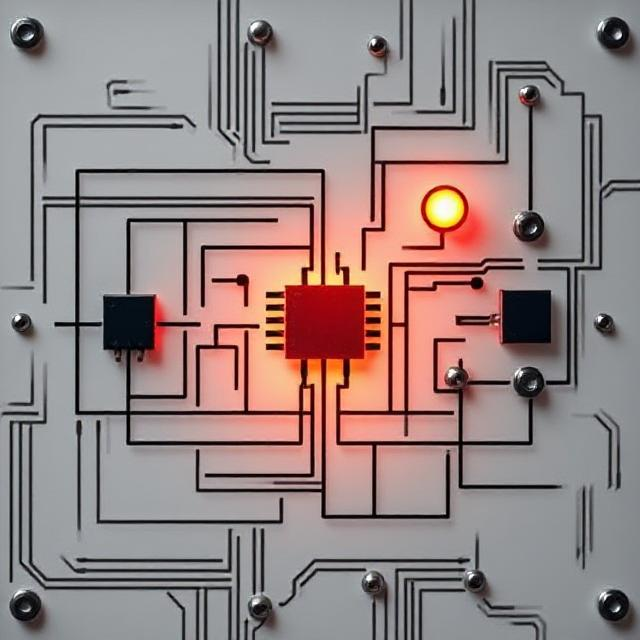VLSI stands for Very Large Scale Integration. It is the process of creating integrated circuits (ICs) by combining millions or even billions of transistors onto a single chip.
-
Early computers used only a few transistors.
-
VLSI allows modern devices to be small, fast, and powerful.
-
It is used in microprocessors, memory chips, smartphones, laptops, and many digital systems.

Why Advanced VLSI Technologies?
As technology grows, we need:
-
Smaller chips
-
Faster speeds
-
Lower power consumption
-
More functions on a single chip
Advanced VLSI technologies help achieve all this by using:
-
Smaller transistors (measured in nanometers, e.g., 7nm, 5nm)
-
New materials and design techniques
-
3D structures like FinFETs
Key Concepts in Advanced VLSI
1. Technology Scaling
-
Making transistors smaller increases chip speed and reduces power.
-
Moore’s Law: Number of transistors doubles every 2 years.
-
But as we go below 10nm, we face challenges like heat, leakage, and short-channel effects.
2. FinFET Technology
-
A modern type of transistor used in advanced VLSI.
-
It has a 3D “fin” shape that improves control over current.
-
Offers better performance and less leakage than older planar transistors.
3. Low Power Design
-
Important for mobile devices and battery-powered gadgets.
-
Techniques include:
-
Power gating
-
Clock gating
-
Multi-Vt (different threshold voltages)
-
Dynamic Voltage and Frequency Scaling (DVFS)
-
4. 3D ICs
-
Instead of just flat (2D) chips, VLSI now uses stacked chips to save space and speed up communication between layers.
-
Increases performance without increasing chip size.
Design Tools and Methods
Advanced VLSI uses EDA (Electronic Design Automation) tools to:
-
Design circuits
-
Simulate and verify functionality
-
Optimize performance and power
-
Layout the chip
Popular languages and tools:
-
VHDL / Verilog (for digital design)
-
Cadence, Synopsys, Mentor Graphics (for EDA)
Challenges in Advanced VLSI
-
Power and heat: Smaller transistors can overheat easily.
-
Signal delay: Wires become slower as chips get bigger.
-
Manufacturing defects: Tiny sizes make production harder.
-
Cost: Advanced tools and fabrication processes are expensive.
Applications of Advanced VLSI
-
Smartphones
-
Laptops and PCs
-
AI and Machine Learning processors
-
IoT (Internet of Things) devices
-
Automotive and aerospace electronics
Summary
Advanced VLSI technology helps pack more power, speed, and features into smaller chips. It uses new transistor designs like FinFETs, 3D ICs, and power-saving methods to overcome the challenges of miniaturization. With the help of design tools and smart techniques, engineers can build the brains of today’s high-tech devices. VLSI continues to drive innovation in electronics and computing.











